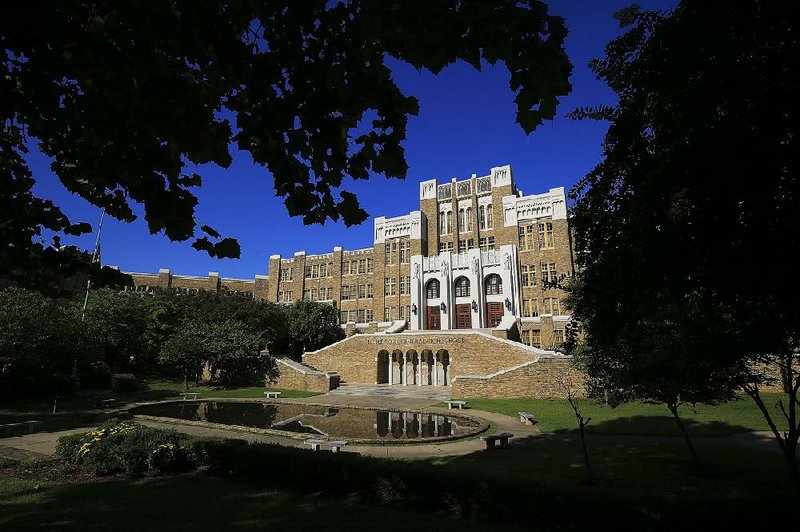WASHINGTON -- The director emeritus of the Smithsonian National Museum of American History includes Little Rock Central High School on his list of must-see historical and cultural institutions.
In his book, 50 Great American Places, Brent D. Glass devoted a chapter to the site of the 1957 Little Rock desegregation crisis.
The former museum head is scheduled to speak today at the 18th annual National Book Festival in downtown Washington, D.C.
He'll also be signing copies of his 2016 guidebook, which highlights "essential historic sites across the United States."
It's an eclectic mix, ranging from the Alamo in San Antonio and Temple Square in Salt Lake City to Thomas Jefferson's Virginia estate, Monticello, and Philadelphia's Liberty Bell.
The Mall of America made the cut. So did Disney's Magic Kingdoms, Pearl Harbor, Hoover Dam, Grand Central Terminal, Thomas Edison's laboratory and Nashville's Ryman Auditorium.
Historian David McCullough has praised Glass' picks.
In the book's foreword, McCullough said the list "leaves no doubt that history, so often dominated by politics and war, comprises far more."
Glass' book includes "ample reminders of who we are as a people, and why we are the way we are, as expressed in American art, music, science and technology, medicine, manufacturing and literature," McCullough added.
Not every state is represented. California, with four sites, led the list. New York and Pennsylvania followed, with three each.
Asked about Little Rock's inclusion on the list, Glass said, "I selected several major themes in American history ... and one of the themes is freedom."
"Each site that I selected was representative of a larger story," Glass said in an interview.
The Arkansas site is a place where freedom triumphed and civil rights advanced, he said.
Young Arkansans led the way, he added.
"I wanted to choose a place where people did something, rather than a place of tragedy like the Lorraine Motel [where civil rights leader Martin Luther King Jr. was assassinated] or Ford's Theatre [where Abraham Lincoln was fatally shot]," Glass said.
Glass paid a visit to the Central High School site before deciding to place it on his top 50 list.
"I wanted to pick sites that I had actually seen," he explained.
The story of the Little Rock Nine is "one of the great stories," he added, referring to the students who were the first blacks to attend the all-white school.
Arkansas Gov. Orval Faubus' efforts to block integration and his defiance of the federal courts sparked "a national crisis, a confrontation between mob violence and the rule of law, a test of federal authority," the book states.
The standoff did more than sully the state's reputation, according to Glass. Images of the unrest, which occurred during the height of the Cold War, ended up "badly tarnishing America's reputation as a land of freedom and opportunity," he wrote.
In Arkansas, "the deep wounds" of that era have slowly healed, he wrote. A statue honoring the Little Rock Nine was erected outside the state Capitol, he noted. (The sculpture is by John Deering, editorial cartoonist of the Arkansas Democrat-Gazette.)
Streets named after King and Daisy Gatson Bates, the woman who helped lead Little Rock's desegregation efforts, are "further evidence of Little Rock's conscious effort to honor the history of civil rights," he added.
In the interview, Glass portrayed the project as enjoyable. "I easily could have picked maybe another 50 [places]," he said. "I'd love to do a Volume II."
Metro on 09/01/2018

